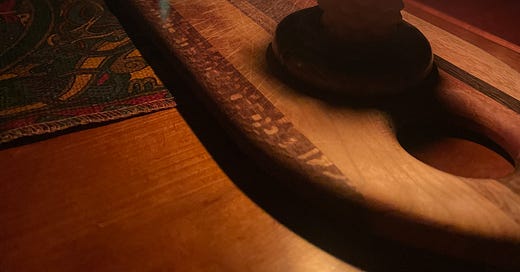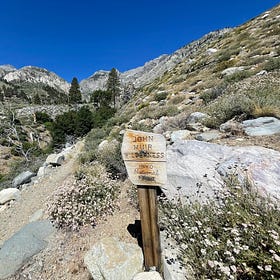Happy Solstice from Unsettling: Our 2024 Recap
Solstice marks the anniversary of our founding here at Unsettling, coinciding nicely with the year’s end and making for a good moment to reflect on where we’ve been in the last twelve months.
Here’s some of the trails of thought we’ve meandered upon this year:
We looked at some of the groundings necessary for repairing past harms, exploring how different approaches to history can help set the stage for repair, via multiple takes on the chapter of Osage history portrayed in Killers of the Flower Moon in “Doubling Up on Killers” and by revisiting the work of artist Dread Scott and his Slave Rebellion Reenactment project (“From the Archive: Reenacting Rebellion”).
And we considered different strategies for taking action on repair work more generally and reparations specifically, in “Piping up for Reparations,” as well as “Working it Backstage.”
This question of how to take action resurfaced often, as we wrestled with how to orient ourselves to the uncertainty of the national political moment, in both “Out at Sea” and “Political Lessons from the Rotting Ones.”
And we reflected on the ways that our relationship to place is part of what helps us heal relationships with one another, spending some time with Wendell Berry in “Our Only World: On Healing and Wholeness,” and looking at the slow process of my own building of a new relationship to my current home in “Vulture Visit” and “One Year Down.” And we used some of Joan Didion’s work to poke at how settler stories can obscure our own understanding of places we think we know through a reading of Where I Was From in “When Sacramento Was a Sea.”
“If we want to save the land, we must save the people who belong to the land. If we want to save the people, we must save the land the people belong to.”
Reconnecting to the land, repairing our relationship there, requires repairing our relationship to people. Repairing our relationship with people cannot be done without attending to our relationship to land. To experience wholeness we must attend to the whole.
We continued to cover the growth of the Land Back movement, documenting not only specific instances of land return but the return of Indigenous practice as well, in pieces such as “Indigenous Agroforestry,” “A Surprise in the Eastern Sierra,” and “Land Return and Food Sovereignty.” And of course we took a look at one of the biggest victories for Indigenous stewardship in recent times with “History in the Making: Dam Removal on the Klamath.”
A Surprise in the Eastern Sierra
Here, right where the heart of the myth of wilderness was being spun—the John Muir Wilderness, where I was heading, begins just a few miles up, and of all the wilderness areas it may be the most implicated in the story of ‘untouched’ land in which humans ostensibly did not interfere—was an edifice to the opposite truth, to the meddling in natural processes that has always accompanied the management of wilderness in the so-called United States and everywhere we have exported the concept.
History in the Making: Dam Removal on the Klamath
“After the fish kill happened, dam removal became the only option for Yurok because we could not allow for our river to be that sick ever again. We just couldn’t.” — Amy Bowers Cordalis, Yurok Tribal member and Principal, Ridges to Riffles
These many victories have been a long time coming, made possible by a century of organizing and activism. We shared resources to learn about one slice of that history, honoring the 50th anniversary of the Boldt Decision and the direct action campaigns that restored many treaty rights in “Fishing in Solidarity.”
We were also hopeful about the possibility of future change and emerging forms of law that might open up new avenues for how land is held, in “Growing a New Legal Landscape: The Rights of Nature Movement.” And we threw some support behind one movement organization providing legal to those who want to relate to land in more collective ways, in Funding Collective Land Ownership.
Of course, 2024 is not quite done; there’s at least one more piece in the works which I hope to have for you all before December is out.
Thanks to all of you who have come through this year with me, as well as all you new readers who have joined in recent months. 2025 is coming at us fast with many new challenges. I look forward to thinking with all of you about how we might face them together, and how we continue to build cultures of repair and relationship in the many communities and places in which we all live.
Warm wishes to you all on this long night,
Meg






